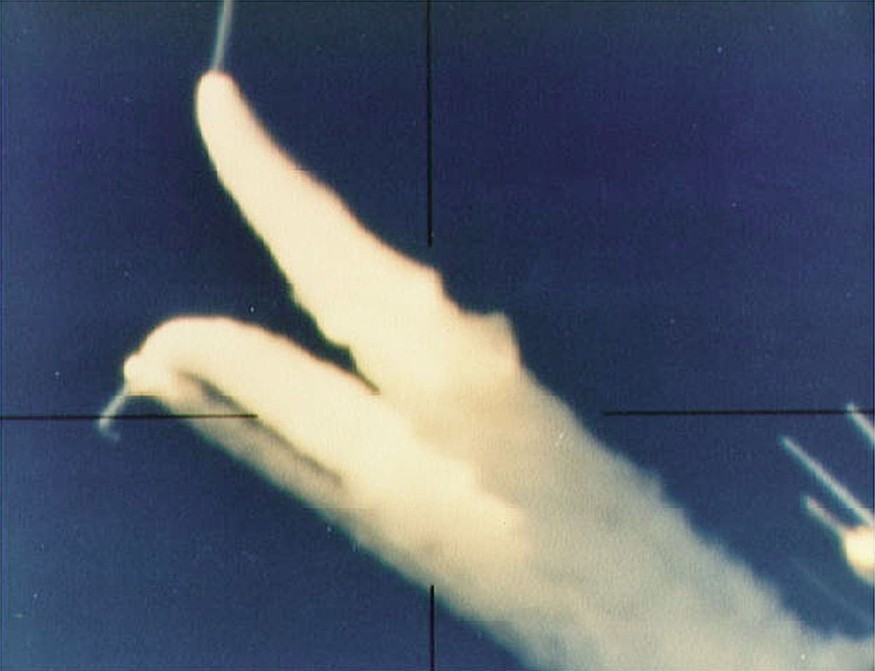A new book claimed that the fatal crew of NASA's Challenger space shuttle momentarily survived the terrible explosion before the capsule plummeted into the Atlantic.
Crew members Michael Smith, Francis 'Dick' Scobee, Ronald McNair, Ellison Onizuka, Judith Resnik, Gregory Jarvis, and Christa McAuliffe ejected into the fireball 73 seconds after the launch Florida in 1986.
Book author Kevin Cook claimed the astronauts were almost likely alive at first. Thanks to the vessel's heat-resistant silicon tiles, which NASA engineers built to endure re-entry. Cook added Challenger did not burn up the crew.

Challenger Crew Alive Few Seconds Before Crash
Following the explosion, the crew "were conscious, at least at first, and fully aware that something was wrong," according to the author of "The Burning Blue: The Untold Story of Christa McAuliffe and NASA's Challenger."
NASA launched the capsule into the sky at a force of 20Gs. According to later analysis, it was significantly larger than the three Gs the astronauts prepared to take but still survivable.
The investigation also found no evidence of sudden depressurization, indicating that the passengers were awake and that one astronaut had activated three of their emergency supplies.
The New York Post said Smith, seated on the right side of the flight deck, peered out his window and saw a burst of mist or a fire. He also tried to restore power to the shuttle after someone manipulated the switches on his control panel.
A computer screen at Mission Control on the ground showed declining pressure in the right booster rocket. It had a fuel leak.
The capsule then fell 12 miles, achieving a top speed of over 200 miles per hour and lasting two minutes before falling into the ocean.
The rubber O-rings that held the booster parts in place and carried explosive hydrogen fuel stiffened and did not fully expand due to the cold weather.
This meant that a minor breach of less than an mm allowed a few grams of fuel to escape.
Due to an unexpected overnight frost, NASA had vetoed engineers' cautions against proceeding with the launch.
Bad Management, Disregard For Safety Guidelines Caused NASA Challenger Disaster
Daily Mail said Former US President Ronald Reagan launched an investigation into the Challenger disaster. It was discovered that bad management and a disregard for safety guidelines played a role in the disaster.
It's thought that several factors influenced the agency's decision to go through with the launch when it would have been preferable to wait.
The first reason could be that NASA had numerous launches planned that year and wanted to demonstrate that they could achieve their timetables.
The other consideration was that Reagan had his State of the Union speech scheduled for that night, and he wanted to include the launch in his speech.
After the failure, NASA's shuttle program was put on hold for over three years, with the second shuttle, Discovery, flying flight on September 29, 1988.
NASA retired the remaining shuttles in 2011, opting instead for multimillion-dollar rides on Russian Soyuz spacecraft to transport American astronauts to the International Space Station.
The Challenger catastrophe caused a nearly three-year hiatus in NASA's shuttle program, which resumed in September 1988 with the launch of Discovery.
The program was terminated in 2011, and the remaining vessels were retired, with US astronauts boarding Russian Soyuz capsules for multimillion-dollar trips to the International Space Station ever since.
RELATED ARTICLE : Space Shuttle Challenger 35 Years After Explosion: Lessons Learned From the Fatal Disaster
Check out more news and information on Space on Science Times.
© 2025 ScienceTimes.com All rights reserved. Do not reproduce without permission. The window to the world of Science Times.









